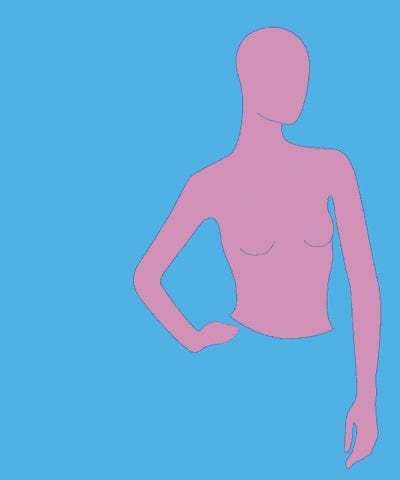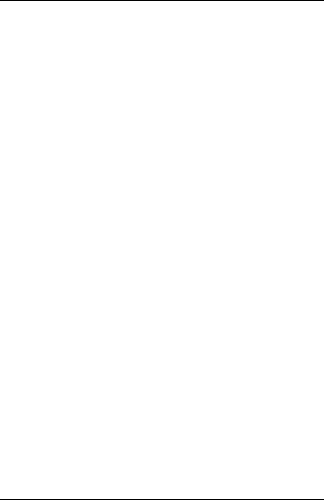A fashion designer breaks down why some clothes are worth spending more on
At a fast-fashion retailer such as H&M, a simple cut-and-sew top can cost as little as $15. At Gap, something similar might run about $45. At Elizabeth Suzann, a small fashion label based in Nashville, Tennessee, one of the brand’s minimal kimono-sleeved t-shirts, made of cotton twill, is $140.


At a fast-fashion retailer such as H&M, a simple cut-and-sew top can cost as little as $15. At Gap, something similar might run about $45. At Elizabeth Suzann, a small fashion label based in Nashville, Tennessee, one of the brand’s minimal kimono-sleeved t-shirts, made of cotton twill, is $140.

Those are sizable differences for products that may not appear all that different, but the price isn’t just about the end product. The cost of a piece of clothing is the result of the entire process that brought that product into existence, including the expenses from fabric, constructing the garment, and the business model of the company.
Elizabeth Suzann’s founder, Liz Pape, recently took to her company’s blog to explain in exacting detail—beyond even what a company such as Everlane, known for its transparency, offers—how it arrived at the price of one particular top, the $185 Artist Smock in silk crepe.
Pape’s story offers a justification of her company’s pricing, of course, and not every business making expensive clothes operates like hers. But comparing her breakdown of her clothing’s costs to some of the standard practices in the fashion industry, including those of fast-fashion labels, can offer valuable perspective on how brands set the prices you shell out for.

Cost to produce
The two main components in a garment’s production cost are labor and materials. Elizabeth Suzann also factors in waste, for a total production cost of $63.16, or about a third of the final price of the item. That’s already more than you would spend to buy a similar item at many fast-fashion chains.
Labor: Elizabeth Suzann is unusual in that it makes everything in its Nashville studio. Most garment makers, from the very high end to the low, contract work out to independent factories. Pape says production jobs start at the same wage as other positions, and pay above the federally mandated US minimum of $7.25 per hour, also Tennessee’s lower limit.
That amount is more in line with what factories in higher wage countries pay experienced employees than what you’ll typically find in the Asian factories manufacturing for mass-market brands—and plenty of expensive brands too (paywall). In China, the world’s largest garment producer and Asia’s highest-wage country for garment work (pdf), workers earn $297 per month on average. Bangladeshi workers earn significantly less than even that, though it’s worth remembering that those jobs are vital to many in the country.
Elizabeth Suzann’s labor costs are also higher because it has a nice office in Nashville, full of drinks and snacks.
The difference isn’t just in how much workers make and the conditions they work in, but also the work they’re doing. Elizabeth Suzann top-stitches high-stress seams for durability, according to Pape, and uses French seams, which leave no raw fabric edges exposed, ensuring edges don’t unravel and giving the inside of the garment a cleaner look. These methods are most common in high-end clothing, since they’re time and labor-intensive.
Factories focused on quickly and cheaply churning out large quantities of clothes, on the other hand, typically use a serging machine to finish edges, which isn’t necessarily a problem. The greater concern is that they may also cut corners when sewing clothes to save time, leading to items that fall apart after little wear.
Material: The greatest cost in producing the top is from the silk material the brand uses. It has a substantial weight, making it last longer, and the company pre-washes its fabric before sewing. The process takes time (meaning more money), and causes the silk to shrink up to 15%, so the company ends up with fewer yards of fabric than it originally purchased.
Again, the process is more common to high-end clothing, and makes for a better product. Brands working to produce cheaply and quickly don’t often pre-wash their fabrics. The item will shrink the first time you wash it, leaving you with something that looks and fits differently than what you initially purchased.
Elizabeth Suzann also likely pays more for fabric just because it’s buying smaller quantities. Huge brands leverage economies of scale to keep prices down, buying bulk quantities of fabric and ordering massive numbers of garments from factories.
Wastage: All brands have waste in the form of fabric scraps and factors such as human error.
Operating costs
The single largest set of costs in Pape’s price breakdown is made up of the many expenses involved in running a fashion business, such as maintaining an office space, paying non-production employees, and advertising. Every brand has these expenses, and they can vary quite a bit depending on how the company operates. Brands that run big ad campaigns need to bake those marketing costs into the price of their goods, just as brands with retail stores need to factor those costs into what they charge.
Because Elizabeth Suzann sells direct to consumers, the costs behind its clothes are different than they would be for a designer brand that sells wholesale to department stores or other retailers (which then sell to consumers). In a wholesale model, many brands follow a keystone markup structure (shown in the gif): They sell an item to a retailer at twice what it cost them to produce it to make their profit. The retailer, which needs to make a profit as well, then doubles the wholesale cost to arrive at the final price tag you see in a store.

Brands that “cut out the middleman” and sell directly to consumers, including Everlane and Warby Parker—and also Gap and H&M, which produce and sell their own clothes—don’t need to include that last retail markup. That can save money for the consumer and may give the brand more room for profit, though brands with their own brick-and-mortar stores do need to account for rent, staffing, and other costs.
It’s worth noting, though, that the markup retailers charge is what allows them to be in business and pay employees. The new crop of digital-only, direct-to-consumer brands may “cut out the middleman,” but they also cut out the jobs and economic development in towns and cities that retailers have historically provided.
Design and research: At the top of this group of expenses, Pape lists “Design + research,” not a material expense but still an important one that consumes time and energy. After all, fashion labels are selling design, as well as fabric and thread.
Designers are professionals like any others, and those at the top of their field command higher prices for their work. There are plenty of brands that are even more expensive than Elizabeth Suzann, and in many cases that markup may be due to the cachet of a famous and well-regarded designer.
Profit
The amount left after all expenses are factored in is the actual profit the brand receives on an item. In the case of Elizabeth Suzann’s Artist Smock, it’s just $18.50 per shirt, or 10% of the sale price. Pape says her company reinvests that amount in the business and its future.
Brands can have higher or lower profit margins, but fast-fashion labels such as H&M tend to get by on fairly thin ones. They sell massive volumes of clothing, so they do extremely well even on narrow margins. But to sell that many pieces of clothing, they need to keep costs as low as possible, which is why they often manufacture in countries with low wages and use inexpensive fabrics.

What’s the takeaway?
By itself, price doesn’t guarantee an item is made ethically, or that it’s high-quality. It does, however, reflect all the decisions brands have to make, and for that reason it can be useful to know how a company comes up with the amount it asks shoppers to pay.
“Really, when we’re choosing to buy something, what should matter is how much value it will have in our lives and how much we’re willing and able to spend,” Pape writes. “The cost to make it—or how good of a deal it was given that cost—is pretty irrelevant in practice. You won’t get any more enjoyment out of it, and simply knowing the cost won’t make it last any longer or serve you any better.”
It’s a point worth keeping in mind next time you go shopping, and one that should figure into your calculus in assessing the value of any item of clothing you’re thinking of purchasing.